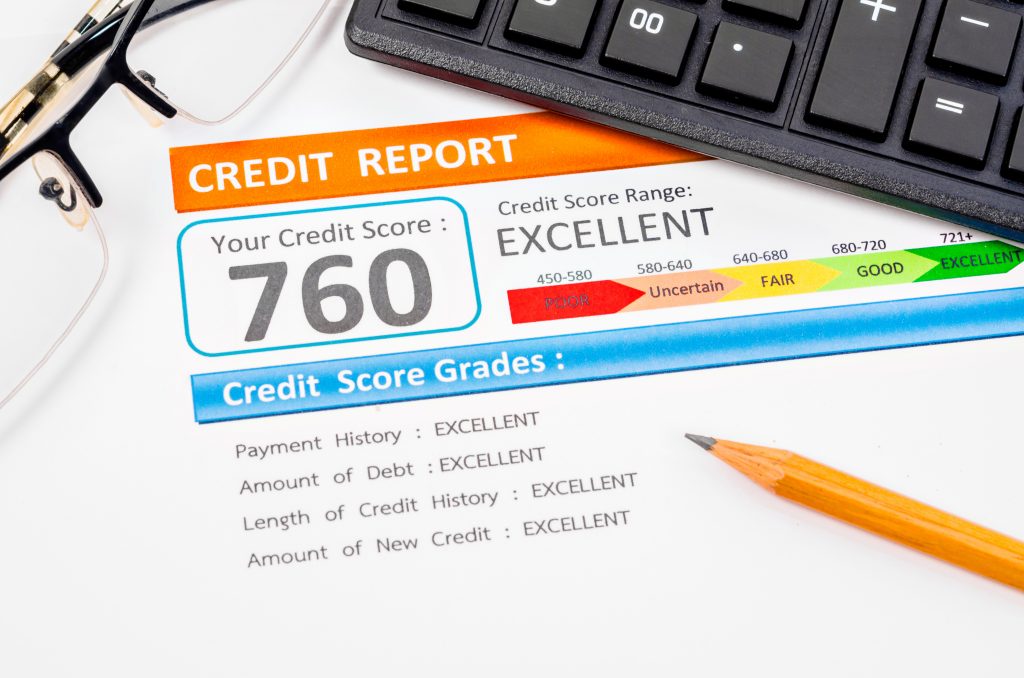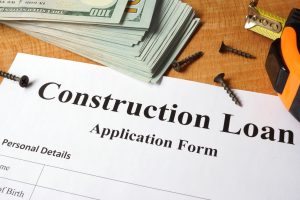Getting To the Credit Score You Need to Build a Home


In a recent survey is was found that most Americans (80%) have a basic understanding and knowledge of what a credit score is. Millennials in that survey had a poorer understanding of the basic facts than did Gen-Xers. In most cases, all of that goes out the window when it comes to applying for a construction loan. Construction loans are different from car loans, credit cards, and even 30 year mortgages for existing homes.
Why is a Construction Loan Harder to Get?
 When you apply for a loan, lenders typically have specific loan programs. The lender have established criteria and terms for each program. Many don’t realize it but most lenders create loans and then sell them. To sell them they have to meet certain minimum terms. These terms are established by Fannie Mae, the common term for the Federal National Mortgage Association. Fannie Mae determines the minimal standard that lenders have to set for borrowers to make the loan saleable. While that may sound complicated, it basically keeps funds flowing so lenders can sell existing loans and keep making new loans to more and more home buyers.
When you apply for a loan, lenders typically have specific loan programs. The lender have established criteria and terms for each program. Many don’t realize it but most lenders create loans and then sell them. To sell them they have to meet certain minimum terms. These terms are established by Fannie Mae, the common term for the Federal National Mortgage Association. Fannie Mae determines the minimal standard that lenders have to set for borrowers to make the loan saleable. While that may sound complicated, it basically keeps funds flowing so lenders can sell existing loans and keep making new loans to more and more home buyers.
When you buy an existing home, whether new or used, it actually exists. It is ready to be lived in. Should you get a loan and not be able to make the payment the lender (or whoever has purchased the loan) has an asset that they can sell to try and recoup the amount owed. When you are building a home, that isn’t the case. There is no home on the land for collateral.
Unless you are paying cash for a home, a construction loan is needed to build a home first before a conventional 15 year or 30 year mortgage can be given for the long term financing. The problem is, without an asset in place the bank is lending money on the promise that a home will be built and at the end of the construction process they will have collateral. But what if something happens along the way and the home isn’t completed?
What Credit Score is Needed for a Construction Loan?
If a home under construction isn’t completed, the lender is in a bind. Why, because no one wants to buy a house that is half done? If it is a house built on a site, how long has it set out exposed to the weather? Did the contractors and subcontractors get paid? What is the quality of the home if sub-contractors weren’t paid and no one came back to service any issues. All of these items make it very hard to sell a home that isn’t completed.
All these unknowns create something a lender calls risk. Risk is bad for lenders because higher risks means the lender may not get their original loan (or investment) back from that borrower. When lenders detect higher risk, the borrower pays for that with higher interest rates. However, lenders are adverse to risk. A credit score is a modern way to measure risk with a borrower. Do they pay their bills on time? Do they owe too many people money? Do they make enough money to pay the bills they have? These type of factors go into creating a credit score.
RELATED: SEVEN DESIGN IDEAS TO MAXIMIZE SPACE IN YOUR NEW HOME
A lender would rather get less in interest rate and have a lower risk borrower because they know they will get the funds they loaned to the borrower back based on their past history. Because construction loans are risky to begin with in a lender’s eyes, the interest rates are usually at least 1% higher than that of a conventional 15 year or 30 year mortgage. The same with the credit score. If you are building a home you should aim for a minimum 680 credit score. A better score is 700 -720 to qualify for a construction loan. It is possible to get a loan with a lower score but there must be specific mitigating circumstances.
Confused Between the FICO Score and the VantageScore?
The Fair Isaac Corporation (FICO) is the dominant scoring system that became the industry standard for lenders making prescreened credit offers, approving or denying applications for new credit, and managing their existing credit accounts. It is still the major score (or a variation of it) used my mortgage or construction loans lenders when evaluating borrowers and most likely that his the score you need to care about and focus on.
An important model that is gaining on FICO for credit scoring is VantageScore. It is a credit scoring model that first emerged in 2006 as a joint venture of the big three credit bureaus — Experian, Equifax and TransUnion. It is the score you are typically being shown if you have a credit card that provides free credit scores and is also the one displayed by Credit Karma, a popular credit knowledge site on the web.
What Can I Do to Improve My Score?
If you don’t have a 680 credit score there are many things you can do to improve it! First, get a copy of your credit report. That shows you the building blocks of what impacts your score. You are entitled to one free copy of your credit report every 12 months from each of the three nationwide credit reporting companies. You can order them online from annualcreditreport.com, who is the only authorized website for free credit reports, or call 1-877-322-8228. Review for errors and get any fixed. The FTC says that 21% of all credit reports have confirmed material errors. These errors, left unfixed, could be the difference in building a home or not.
Which score is the important one? Here are 5 basic items you need to do raise your credit score:
1.Keep credit card balances below 30% of available credit
2.Eliminate credit card balances altogether
3.Leave old debt on your report
4.Use your credit
5.Pay your bills on time
While these may sound simple, doing them consistently creates a strong credit score over time.
Construction Loans and New Home Construction
While construction loans are harder to get, people are building homes every day. When you decide it is time to build your new home and you know you will need to finance it, don’t wait. The very first place you should go is to a construction loan lender and get qualified for a loan. It is important to know if you qualify, and how much you qualify for, before you ever start looking at home plans.
Modular homes are less risky to build. Because they are built in a factory and delivered 75% – 85% complete, the home is done quickly leaving less of a chance for something to go wrong. Even if it does, the home is set and protected and substantially complete. Modular homes reduce the risk for construction loan lenders.
The post Getting To the Credit Score You Need to Build a Home appeared first on Impresa Modular.




